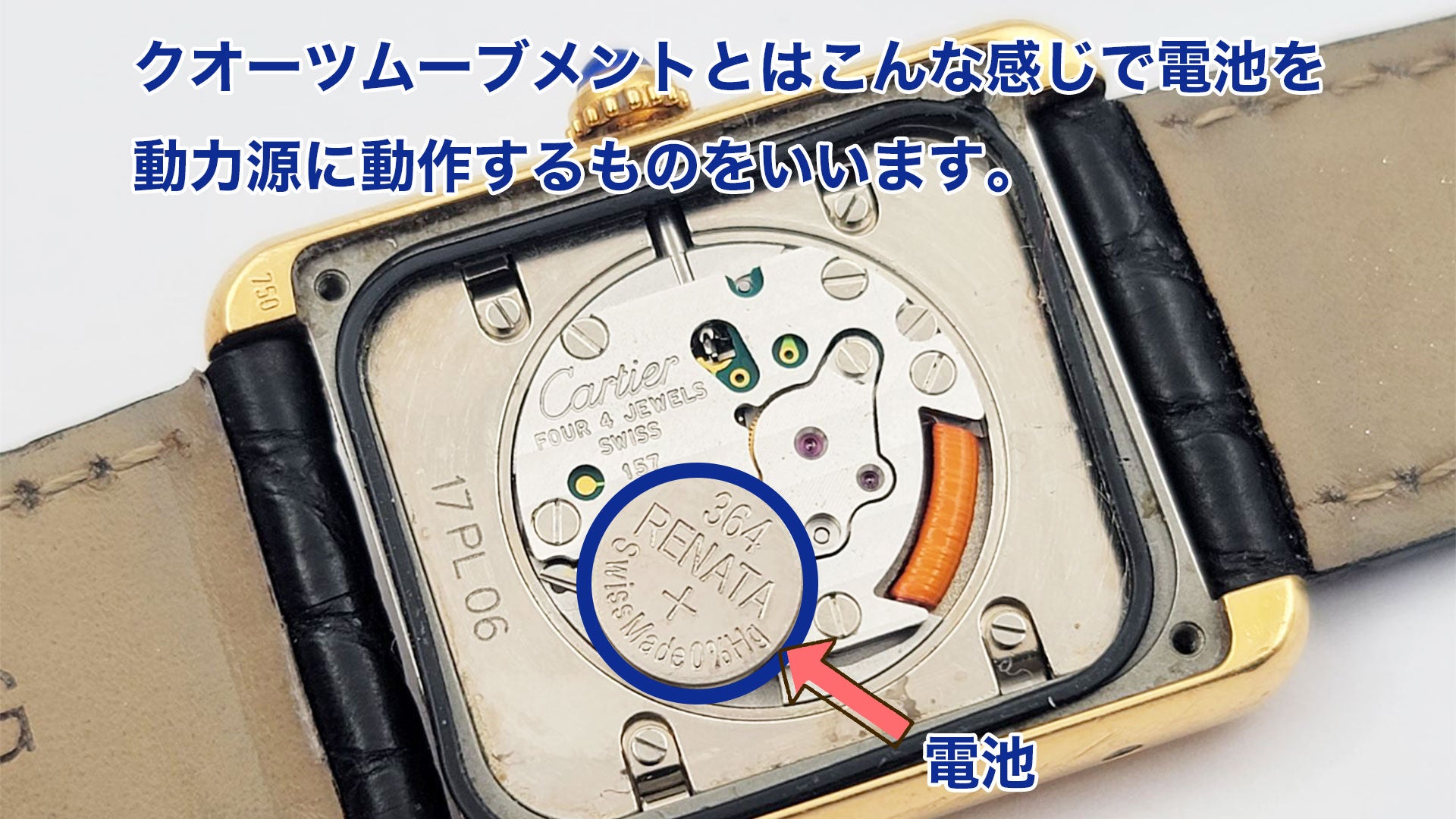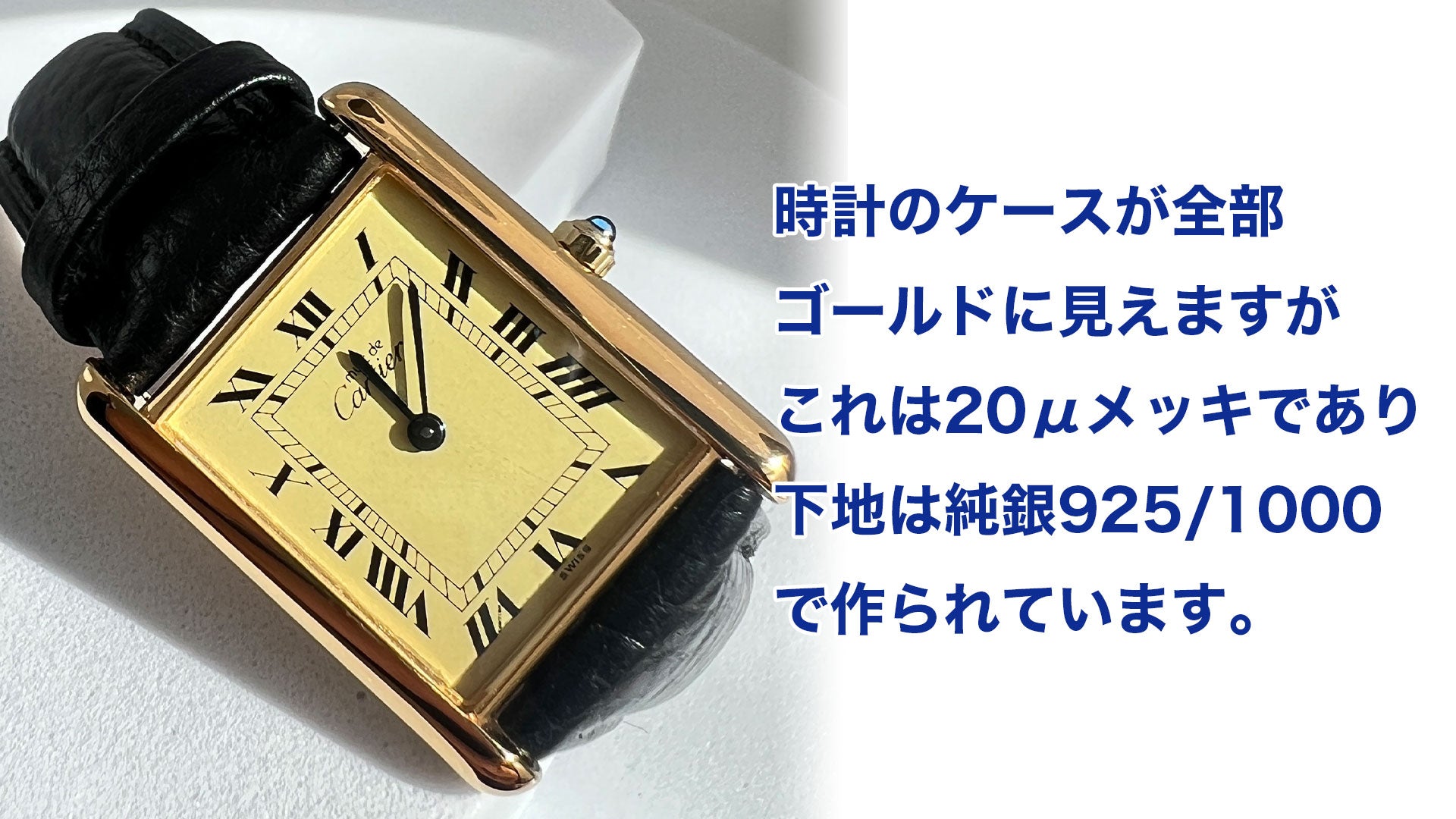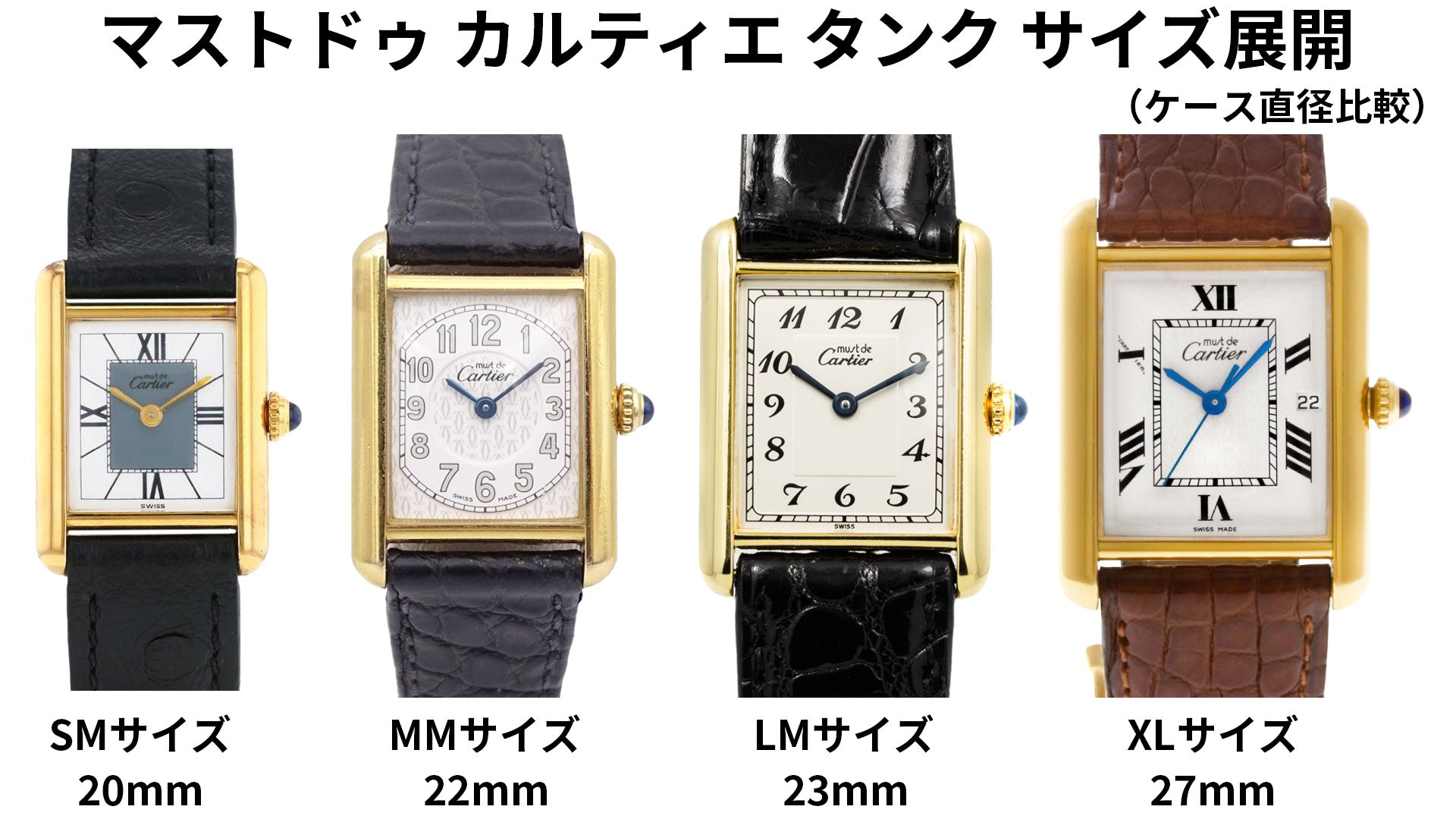Click here to watch the video about Must Do Cartier ↓
Cartier Must Tank discontinued model
The "Must Tank," whose official name is "Must de Cartier Tank," was an extremely long-running hit model that was in vogue from the late 1970s to the mid-2000s.
And because of their ease of use and beauty, even those of us living in the modern age are captivated by mast tanks.
Although this model is discontinued, it was produced continuously for many years and can still be purchased today.
From here on, I will explain the history and appeal of mast tanks in detail.
The History of Quartz Watches
First of all, what is a quartz watch?
What are its characteristics?
I will explain it in an easy-to-understand manner by looking at the historical background in which it emerged and Cartier.
In the 1970s, our Japanese company, Seiko, achieved a groundbreaking innovation by powering watches with quartz crystal.
This demonstrated to the world the most advanced technology available: it was possible to produce movements (the internal mechanisms that power the watch) cheaply while maintaining absolutely no accuracy.

This led to the widespread adoption of quartz movements worldwide, and of course Cartier also adopted them.
When you think of watches, Switzerland comes to mind, but what makes Swiss watch brands different is that Swiss watches have the image of being based around specialized watches.
Therefore, the movement within it is also important.
That's why Swiss watch brands place value not only on their appearance, but also on their internal mechanisms, which is why Swiss watches are said to be highly precise.
The image is that the gears and parts are carefully made one by one by craftsmen, and then combined to create a single object.
However, the Cartier brand is fundamentally a jewelry brand.
When looking at a watch, the internal mechanism is of course important, but the appearance tends to take up a larger proportion of the evaluation.
That is why Swiss watch brands were not able to actively adopt quartz movements, but Cartier, which places less emphasis on movements, was able to actively adopt quartz movements .
Now let's take a look at how Cartier watches have fared.
Cartier's "Must Collection"

In the late 1970s, Cartier released watches that were affordable and maintained their brand image while still retaining the traditional mechanical hand-wound wristwatch style.
That is the "Must de Cartier" collection.
As the name suggests, this is a watch that "everyone should have."
This collection inherited Cartier's sophisticated designs, but by using new materials it was possible to produce them cheaply, allowing people to feel the charm of Cartier.
For example, up until then, Cartier watches had cases made out of solid gold (made entirely of gold) or platinum.
However, this Must Do collection has succeeded in keeping the price down by using pure silver (sterling silver) as the base for the case and then plating it with 18K gold, and by using the quartz movement explained earlier.
(As a side note, the Must Collection also has hand-wound movements.)
In addition, this plating method involves a special coating technique called "vermeil."
The difference from ordinary plating is that standards require that gold be coated on 925 silver to a thickness of 1.5 microns or more.
In reality, it has a 20μ coating.

To put it simply, it is applied thicker than a regular coating.
This must-have collection was priced at $500 at the time, or 50,000 yen in Japanese yen.
These collections were a huge hit around the world, and Cartier watch sales, which had previously been around 3,000 units per year, topped the 160,000 unit mark by the end of the 1970s.
This was the first time that Cartier had mass-produced a watch on this scale, and these figures show just how many must-have collections have reached people all over the world.
It could be said that adopting a quartz movement was a brilliant move that only Cartier, which originated as a jewelry brand, could have made.
Now, from here on, I would like to introduce various models that Cartier produced in the 1970s and 1980s.
1. Must de Cartier Tank

Paying homage to the original Tank Louis Cartier, the Must de Cartier Tank was released with a variety of dial options, including dark blue, red, black, and even striped three-tone gold.

Since then, countless Must de Cartier watches have been released, featuring a wide variety of men's and women's watches, with different sizes, shapes, dial colors and finishes.
In the 1980s, French fashion designer Yves Saint Laurent was photographed wearing a Must de Cartier Tank in 1983, making the watch an essential part of the fashion world.


This model was an extremely long-running hit, and in the 1990s various dial variations were created and it continued to be sold into the 2000s.
It was such an incredibly popular watch that it is still popular today and is counted among Cartier's timeless masterpieces.
Let's take a look at the Must Do Tank's SM, MM, LM, and XL sizes.

The Must Do Tank is available in smaller sizes that are not currently available, which makes it a good fit for Japanese people with thin wrists, and for men, its small size gives joy to collecting vintage items.
The Mast Tank was originally available in two sizes, but in 1990 the entire model underwent a minor change, and the MM and XL sizes, intermediate between the SM and LM sizes, were introduced.
SM=20mm
MM=22mm
LM=23mm
XL=27mm
SM to MM are ladies' models and LM to XL are men's models, but in reality it's best to just choose the size that fits your wrist without worrying about that.
If you ask why the size range expanded in the 1990s, this was due to the trends of the time, as larger watches became more popular with newer generations.
However, a large watch inevitably makes the watch more noticeable and less elegant.
For this reason, vintage watches that are small but flashy and have a strong presence have become popular among both men and women in recent years.
summary
To sum up, the models Cartier made from the 1970s to 1990s are attractive, and even those of us living in the modern age can appreciate their beauty.
After all, beautiful things have timeless beauty no matter how much time passes.
As a man, I can understand that the mechanical beauty of a hand-wound movement is one of its attractions, but for women who are looking for functionality, I would recommend that you first choose a quartz watch if you want to appreciate the appeal of a brand.



























